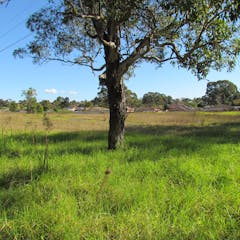
Articles on Urban design
Displaying 101 - 120 of 193 articles

European ideas of the campus as a place apart shaped Australia’s “sandstone” universities. Now universities are adopting urban regeneration strategies, bringing the city to the campus and vice versa.

Toronto has entered a joint venture with a Google sister company to create a high-tech urban development area. The goal is to ‘re-imagine cities from the internet up’ – Google’s internet, of course.

A massive residential development in a flood-prone inner-city suburb sounds like a recipe for disaster. But good urban design can deliver higher density and reduce the flood risk.

Cities around the world are starting to rethink the vast areas of land set aside for parking. The convergence of several trends likely will mean this space becomes available for other uses.

Choreographers could offer engineers tools to stimulate new ideas in city-making.

South Africa needs to review its approach to rolling out Bus Rapid Transit systems as the current model is proving to be too expensive and unsustainable.

Our ageing population presents several social and economic challenges, particularly for the health sector. Physical activity can tackle many of these.

The physical segregation of cities has a crucial role in poverty and access to public services.

New South Wales is the only state that has made meaningful progress on legislation and enforcement of standards capable of creating a sustainable built environment.

With cities becoming more dense and housing more crowded, people rely more than ever on well-designed public spaces, so why hasn’t the furniture changed with the times?

By putting the users of buildings – people – at the centre of the process of designing buildings and infrastructure, we can create healthier, more human-centred spaces.

Successful parks and urban green spaces encourage us to linger, to rest, to walk for longer. That, in turn, provides the time to maximise the restorative mental benefits.

Being crowded into poor-quality high-density units harms residents’ health, but design features that are known to promote wellbeing can make a big difference to the lives of low-income households.

Despite the rise of feminism, strip clubs and other ‘sexual entertainment’ businesses have proliferated in our cities. And women are feeling the harmful impacts of the industry’s presence.

While many talk about 30-minute cities, some aim for residents to be able to get to most services within 20 minutes. But cities like Melbourne have an awful lot of work to do to achieve their goal.

Research shows planners and built environment professionals have surprisingly poor knowledge about how cities might harm mental health. The good news is that simple steps can make a big difference.

Many new housing developments are being built along busy roads and rail lines, but lack design features that would reduce occupants’ exposure to harmful traffic pollution.

Most women feel unsafe when using public transport. Instead of gender segregation, researchers suggest gender-sensitive design could be a better way to ensure safety for all.

Extreme heat divides people from the environment and from each other. So with the rapid densification of our cities, what kind of legacies are we building for future generations?

New research shows many good intentions for creating urban environments that promote good health were not carried through. The solutions start with engaging more closely with residents themselves.





